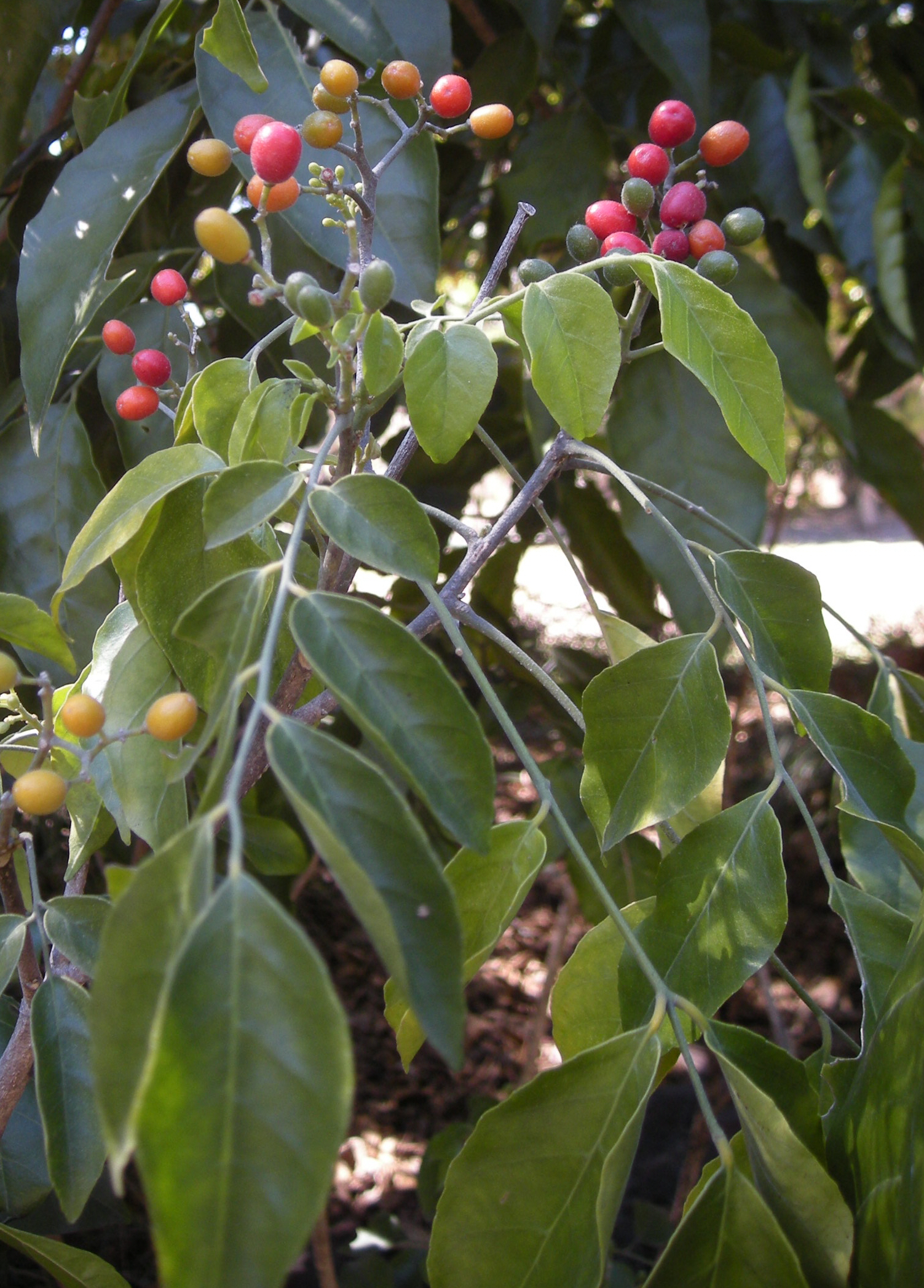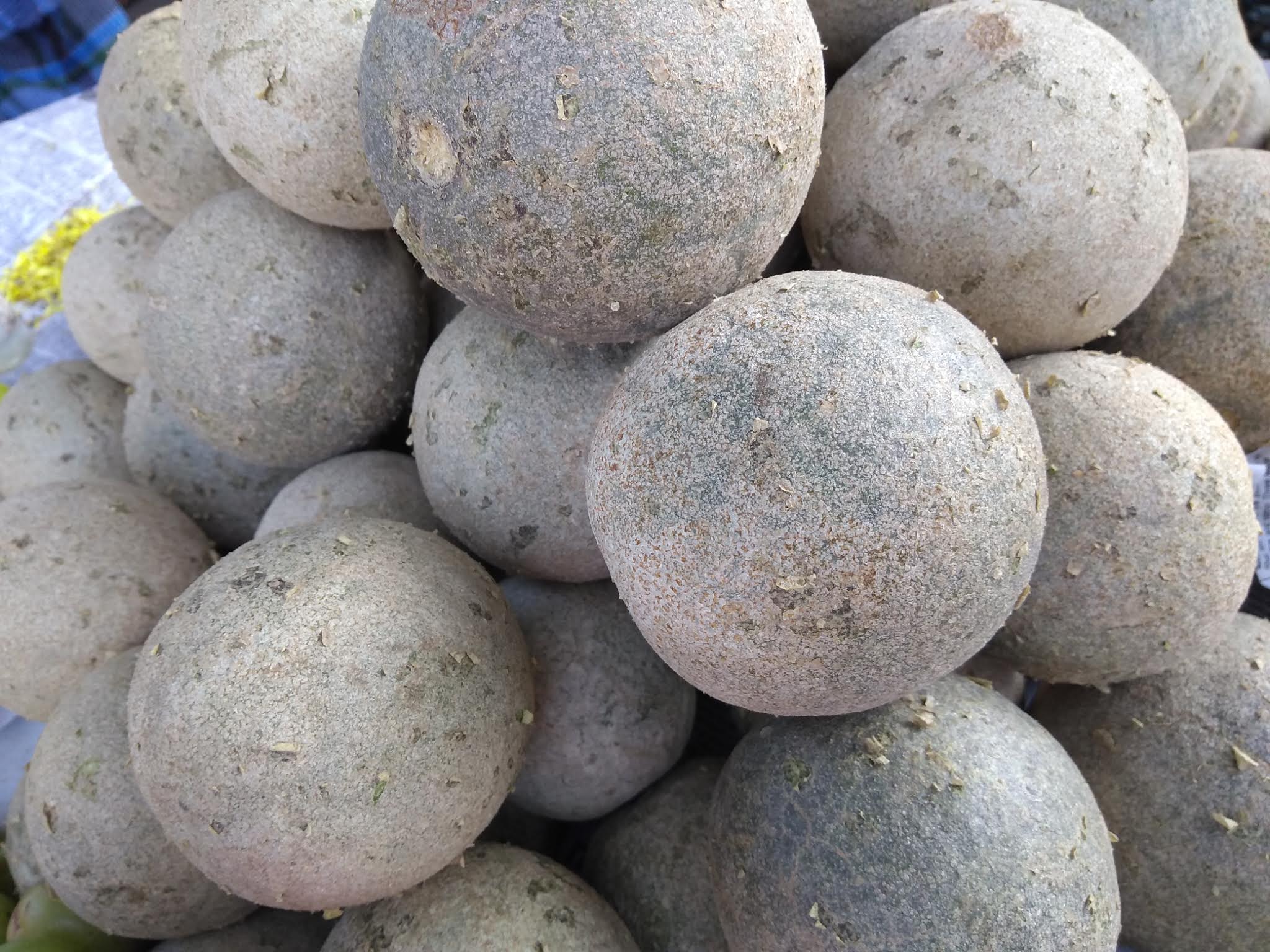|
Citreae
Citreae is one of the two tribes of the flowering plant family Rutaceae, subfamily Aurantioideae, the other being Clauseneae. Subtribes and genera Three sub-tribes are included: * Triphasiinae ** '' Luvunga'' Buch.-Ham. ex Wight & Arn. ** '' Merope'' M.Roem. ** '' Monanthocitrus'' ** '' Pamburus'' Swingle ** '' Paramignya'' Wight ** ''Triphasia'' ** '' Wenzelia'' Merr. * Balsamocitrinae ** ''Aegle'' Corrêa – bael ** '' Aeglopsis'' Swingle ** '' Afraegle'' (Swingle) Engl. ** '' Balsamocitrus'' Stapf ** '' Feroniella'' Swingle ** '' Limonia'' L. – curd fruit ** ''Swinglea'' Merr. * Citrinae **'' Atalantia'' **'' Burkillanthus'' **'' Citropsis'' **''Citrus'' **'' Clymenia'' (may belong in ''Citrus'') **'' Hesperethusa'' **'' Naringi'' **'' Poncirus'' – trifoliate orange (may belong in ''Citrus'') **''Pleiospermium'' **'' Severinia'' Notable species in the Citrinae group include Bergamot orange, calamondin, citron, grapefruit, lemon, lime, orange, pummelo, ... [...More Info...] [...Related Items...] OR: [Wikipedia] [Google] [Baidu] |
Aurantioideae
Aurantioideae (sometimes known as Citroideae) is the subfamily within the rue and citrus family (Rutaceae) that contains the citrus. The subfamily's center of diversity is in the monsoon region of eastern Australasia, extending west through South Asia into Africa, and eastwards into Polynesia. Notable members include citrus (genus ''Citrus''), bael (''Aegle marmelos''), curd fruit (''Limonia acidissima''), species of genus ''Murraya'' such as curry tree (''M. koenigii'') and orange jessamine (''M. paniculata''), and the small genus ''Clausena''. Description Aurantioideae are smallish trees or large shrubs, or rarely lianas. Their flowers are typically white and fragrant. Their fruit are very characteristic hesperidia, usually of rounded shape and colored in green, yellowish or orange hues. Taxonomy The subfamily has been divided into two tribes, the ancestral Clauseneae and the more advanced Citreae, as in a 1967 classification. A 2021 classification by Appelhans et al. bas ... [...More Info...] [...Related Items...] OR: [Wikipedia] [Google] [Baidu] |
Poncirus
The trifoliate orange, ''Citrus trifoliata'' or ''Poncirus trifoliata'', is a member of the family Rutaceae. Whether the trifoliate oranges should be considered to belong to their own genus, ''Poncirus'', or be included in the genus ''Citrus'' is debated. The species is unusual among citrus for having deciduous, compound leaves and pubescent (downy) fruit. It is native to northern China and Korea, and is also known as the Japanese bitter-orange, hardy orange or Chinese bitter orange. The plant is a fairly cold-hardy citrus (USDA zone 6) and will tolerate moderate frost and snow, making a large shrub or small tree tall. Because of its relative hardiness, citrus grafted onto ''Citrus trifoliata'' are usually hardier than when grown on their own roots. Description The trifoliate orange is recognizable by the large thorns on the shoots, and its deciduous leaves with three (or rarely, five) leaflets, typically with the middle leaflet long, and the two side leaflets long. The flo ... [...More Info...] [...Related Items...] OR: [Wikipedia] [Google] [Baidu] |
Luvunga
''Luvunga'' is an Asian genus of plants in the family Rutaceae: tribe Citreae. Species The Catalogue of Life lists: * '' Luvunga angustifolia'' * '' Luvunga borneensis'' * '' Luvunga calophylla'' * ''Luvunga crassifolia'' * '' Luvunga eleutherandra'' * '' Luvunga minutiflora'' * ''Luvunga monophylla'' * ''Luvunga motleyi'' * ''Luvunga nitida'' * ''Luvunga papuana'' * ''Luvunga philippinensis'' * ''Luvunga sarmentosa'' * ''Luvunga scandens'' * ''Luvunga tavoyana ''Luvunga'' is an Asian genus of plants in the family Rutaceae: tribe Citreae. Species The Catalogue of Life lists: * '' Luvunga angustifolia'' * '' Luvunga borneensis'' * '' Luvunga calophylla'' * ''Luvunga crassifolia'' * '' Luvunga eleuthera ...'' References External links * {{Taxonbar, from=Q9025619 Aurantioideae genera Aurantioideae Flora of Indo-China Flora of Malesia Flora of Australia ... [...More Info...] [...Related Items...] OR: [Wikipedia] [Google] [Baidu] |
Monanthocitrus
''Monanthocitrus'' is a genus of flowering plants in the citrus family, Rutaceae. General common names for the genus include spotseed-lime and monanthocitrus.Swingle, W. T., rev. P. C. ReeceChapter 3: The Botany of ''Citrus'' and its Wild Relatives. In: ''The Citrus Industry'' vol. 1. Webber, H. J. (ed.). Berkeley: University of California Press. 1967. It is a member of the tribe Citreae in the subfamily Aurantioideae, which includes the genus ''Citrus''. It is one of several genera in the subtribe Triphasiinae, which are known technically as the minor citroid fruit trees.Citrus Variety Collection. College of Natural and Agricultural Sciences. University of California, Riverside. Most of the species in this small genus have limited native ranges in |
Clauseneae
Clauseneae is one of the two tribes of the flowering plant family Rutaceae, subfamily Aurantioideae, the other being Citreae, which includes ''Citrus''. References * Wight A wight (Old English: ''wiht'') is a mythical sentient being, often undead. In its original use the word ''wight'' described a living human being, but has come to be used in fictional works in the fantasy genre to describe certain immortal bein ... & Arn 1834. ''Prodromus Florae Peninsulae Indiae Orientalis: containing abridged descriptions of the plants found in the peninsula of British India, arranged according to the natural system''. Vol. I. XXXVII+480 pp. Parbury, Allen, & Co., London. https://www.biodiversitylibrary.org/page/3608847 Aurantioideae Rosid tribes {{Rutaceae-stub ... [...More Info...] [...Related Items...] OR: [Wikipedia] [Google] [Baidu] |
Burkillanthus
''Burkillanthus'' is a monotypic genus of flowering plants in the citrus family, Rutaceae, containing the single species ''Burkillanthus malaccensis''. It is native to Sumatra in Indonesia. It is also native to the Malay Peninsula and Sarawak in Malaysia, but it is extirpated from the peninsula and in Sarawak it was only known from a single specimen collected in 1961. Its common name is Malay ghostlime.Citrus Variety Collection. University of California, Riverside. This species is part of the same subfamily (), tribe (), and subtribe (Citrinae), as genus '' |
Citropsis
''Citropsis'' is a genus of flowering plants in the citrus family, Rutaceae. They are known generally as African cherry oranges.Swingle, W. T., rev. P. C. ReeceChapter 3: The Botany of ''Citrus'' and its Wild Relatives. In: ''The Citrus Industry'' vol. 1. Webber, H. J. (ed.). Berkeley: University of California Press. 1967. They are native to Africa.Yahata, M., et al. (2006)Production of sexual hybrid progenies for clarifying the phylogenic relationship between ''Citrus'' and ''Citropsis'' species.''Journal of the American Society for Horticultural Science'' 131(6), 764-69. This genus is in the subfamily Aurantioideae, which also includes genus ''Citrus''. It is in the tribe Citreae and subtribe Citrinae, which are known technically as the citrus fruit trees.Citrus Variety Collection. College of Natural and Agricultural Science ... [...More Info...] [...Related Items...] OR: [Wikipedia] [Google] [Baidu] |
Limonia (plant)
''Limonia acidissima'' is the only species within the monotypic genus ''Limonia''. Common names for the species in English include wood-apple and elephant-apple. It is sometimes also called monkey fruit. Description ''Limonia acidissima'' is a large tree growing to tall, with rough, spiny bark. The leaves are pinnate, with 5-7 leaflets, each leaflet 25–35 mm long and 10–20 mm broad, with a citrus-scent when crushed. The flowers are white and have five petals. The fruit is a berry 5–9 cm diameter, and may be sweet or sour. It has a very hard rind which can be difficult to crack open, it appears greenish-brown in colour from outside and contains sticky brown pulp and small white seeds. The fruit looks similar in appearance to the Bael fruit ''(Aegle marmelos)''. It contains considerable amount of protein, carbohydrate, iron, fat, calcium, Vit-B & C etc. 100 g of ripe fruit pulp contains up to 49 KCal. Taxonomy A number of other species formerly included ... [...More Info...] [...Related Items...] OR: [Wikipedia] [Google] [Baidu] |
Swinglea
''Swinglea'' is a monotypic genus of flowering plants belonging to the family Rutaceae. It only contains a single species, ''Swinglea glutinosa''. It is native to the Philippines. The genus name of ''Swinglea'' is in honour of Walter Tennyson Swingle (1871–1952), an American agricultural botanist who contributed greatly to the classification and taxonomy of citrus. The genus has one known synonym of ''Chaetospermum'' . The Latin specific epithet In taxonomy, binomial nomenclature ("two-term naming system"), also called nomenclature ("two-name naming system") or binary nomenclature, is a formal system of naming species of living things by giving each a name composed of two parts, bo ... of ''glutinosa'' is derived from ''gluten'' meaning glue. Both the genus and the species were first described and published in J. Arnold Arbor. Vol.8 on page 131 in 1927. References {{Taxonbar, from1=Q15930620, from2=Q5398122 Aurantioideae Monotypic Rutaceae genera Aurantioideae ... [...More Info...] [...Related Items...] OR: [Wikipedia] [Google] [Baidu] |
Atalantia
''Atalantia'' is a genus of flowering plants in the citrus family, the Rutaceae.Swingle, W. T., rev. P. C. ReeceChapter 3: The Botany of ''Citrus'' and its Wild Relatives.In: ''The Citrus Industry'' vol. 1. Webber, H. J. (ed.). Berkeley: University of California Press. 1967.Yahata, M., et al. (2006)Production of sexual hybrid progenies for clarifying the phylogenic relationship between ''Citrus'' and ''Citropsis'' species. ''Journal of the American Society for Horticultural Science'' 131(6), 764-69./ref> Taxonomy The genus is placed in the subfamily Aurantioideae, which also includes the genus ''Citrus''. It has been placed in the tribe Aurantieae and subtribe Citrinae, which are known as the citrus fruit trees.Citrus Variety Collection. College of Natural and Agricultural Sciences. University of California, Riverside. '' ... [...More Info...] [...Related Items...] OR: [Wikipedia] [Google] [Baidu] |
Bitter Orange
Bitter orange, Seville orange, bigarade orange, or marmalade orange is the citrus tree ''Citrus'' × ''aurantium'' and its fruit. It is native to Southeast Asia and has been spread by humans to many parts of the world. It is probably a cross between the pomelo, ''Citrus maxima'', and the mandarin orange, ''Citrus reticulata''. History Wild trees are found near small streams in generally secluded and wooded parts of Florida and the Bahamas after it was introduced to the area from Spain, where it had been introduced and cultivated heavily beginning in the 10th century by the Moors. Identification Citrus × aurantium can be identified through its orange fruit with a distinctly bitter or sour taste. The tree has alternate simple leaves and thorns on its petiole. Usage Many varieties of bitter orange are used for their essential oil, and are found in perfume, used as a flavoring or as a solvent, and also for consumption. The Seville orange variety is used in the production o ... [...More Info...] [...Related Items...] OR: [Wikipedia] [Google] [Baidu] |
Citrus
''Citrus'' is a genus of flowering trees and shrubs in the rue family, Rutaceae. Plants in the genus produce citrus fruits, including important crops such as oranges, lemons, grapefruits, pomelos, and limes. The genus ''Citrus'' is native to South Asia, East Asia, Southeast Asia, Melanesia, and Australia. Various citrus species have been used and domesticated by indigenous cultures in these areas since ancient times. From there its cultivation spread into Micronesia and Polynesia by the Austronesian expansion (c. 3000–1500 BCE); and to the Middle East and the Mediterranean (c. 1200 BCE) via the incense trade route, and onwards to Europe and the Americas. History Citrus plants are native to subtropical and tropical regions of Asia, Island Southeast Asia, Near Oceania, and northeastern Australia. Domestication of citrus species involved much hybridization and introgression, leaving much uncertainty about when and where domestication first happened. A genomic, phylog ... [...More Info...] [...Related Items...] OR: [Wikipedia] [Google] [Baidu] |


